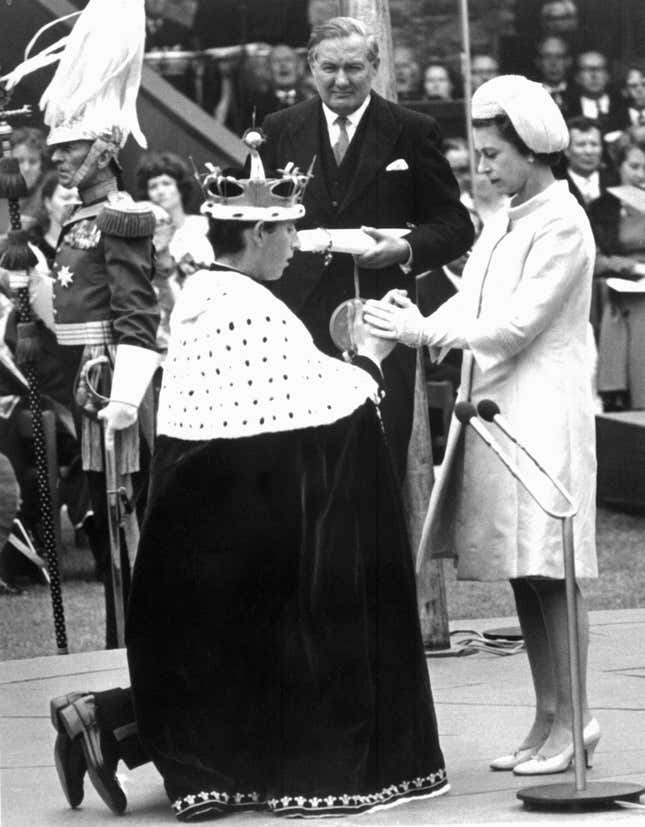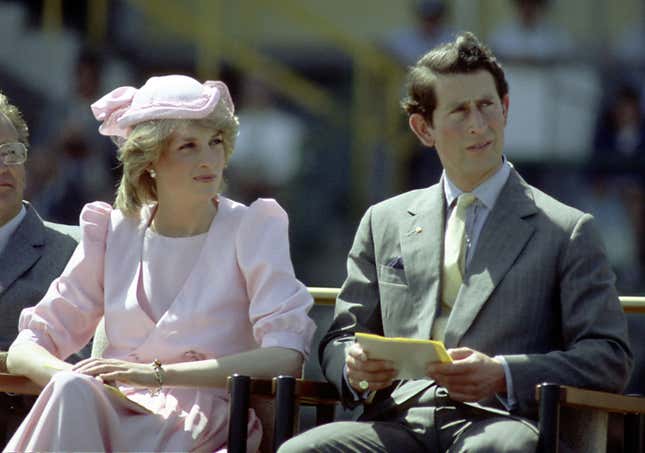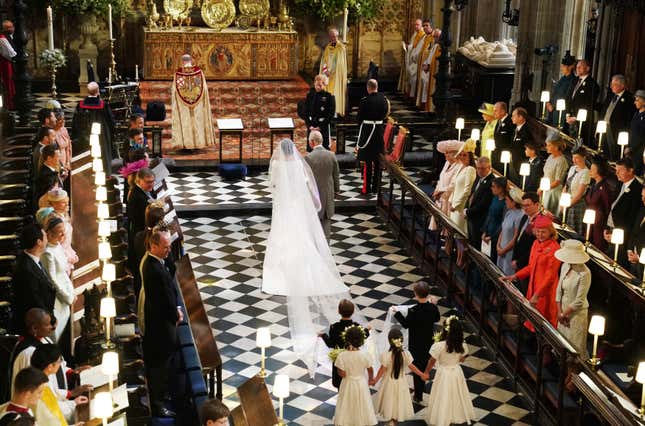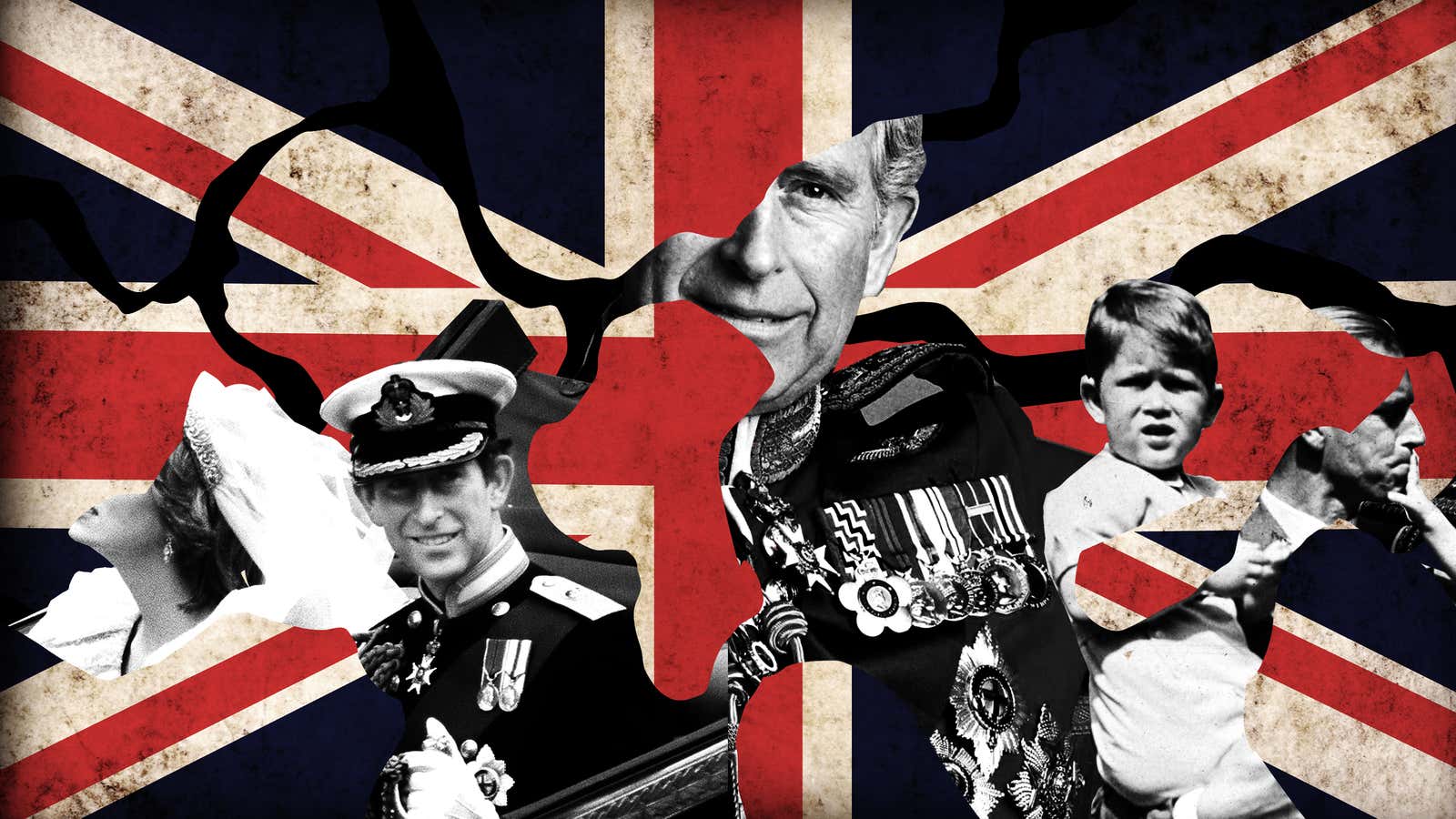In late March, Prince Charles was one of the earliest internationally famous names to be diagnosed with covid-19. He was at high risk by virtue of his age—71 at the time—and the situation had the makings of a terribly ironic stroke of fate. Here was a man who had waited much of his adult life to step into the role for which he was born, who might falter at the very threshold. He wouldn’t be the first heir unexpectedly felled by a global pandemic, either; Queen Victoria’s grandson, Albert Victor, was killed in a flu pandemic in 1892, putting Charles’s great-grandfather on the throne. The risk to his 93-year-old mother was also immediately apparent—around the same time, a footman with whom she had routine contact tested positive—and suddenly, William looked much, much closer to the throne. But, as it turns out, Charles fared better than the younger prime minister, Boris Johnson, and recovered quickly, while Queen Elizabeth II avoided the disease entirely. Charles will go on waiting for a bit longer.
Charles has already held the title of “Prince of Wales” longer than any other man in British history. If he ever takes the throne, he’ll be the oldest person ever to ascend, surpassing William IV, who preceded Victoria and only reigned for seven years before dying at 71, one year younger than Charles is now. He’ll be significantly older than Edward VII, Victoria’s son whom she infamously kept waiting for decades, doling out responsibilities only grudgingly. Charles has spent his decades-long wait attempting to carve out a meaningful role for himself, taking on a variety of sometimes quixotic, often mocked causes that range from environmentalism and interfaith dialogue with the Islamic world to fighting with architects over modernism and doctors over alternative medicine. At the same time, the media and the public have cast him in a variety of ill-fitting parts, including dashing eligible bachelor, prince charming, and the caddish adulterer—the latter of which put a considerable dent in the reputation of an institution that survives thanks to public goodwill. He has even faced doubts about his fitness for the job for which he was born, most famously expressed by Diana, Princess of Wales, in a blockbuster TV interview: “I don’t know whether he could adapt” to the limitations inherent in the role of king. Not only has he spent the vast majority of his life waiting—he’s spent much of that time with a question mark hanging over his head, and attempting to prove himself.
Charles has spent the last few years in particular steadily advancing toward kingship, transforming himself slowly from Prince of Wales to the king in waiting. But The Crown is dredging up old memories and depicting them in a way that makes Charles look particularly terrible, at a time when the crown is facing numerous challenges—Harry and Meghan’s departure, Andrew’s association with Jeffrey Epstein and alleged misdeeds, and the advancing age of the longest-reigning monarch in British history, setting the stage for a delicate and high-stakes transition that hasn’t happened since the last days of the globe-spanning British Empire. And much of the responsibility for pulling it off will lie on Charles striking the right balance with his public image.
Born in 1948, a year after his parents’ marriage, Charles’s birth and early life were the stuff of international news; browsing through the New York Times archives, for instance, uncovers stories about his first haircut, his first birthday, his christening (with the first photo of the baby), a car trip to Sandringham at 7 weeks old, and the fact that he didn’t get any of the cake baked for his first birthday (because it had rum in it). The broad strokes of his childhood are well known: On top of the already distanced parenting style of their era and social class, Charles’s mother was busy with the demands of her roles as heir to an ailing king and then as a new monarch, frequently traveling all over the world for long stretches at what was essentially a demanding, full-time job. She frequently deferred to her brusque husband on matters related to Charles, and Philip thought that what his sensitive child needed was toughening up, culminating in years at the chilly Scottish boarding school Gordonstoun, which was explicitly designed to harden privileged boys. Charles later called it “Colditz with kilts,” which suggests how poorly suited he was to the environment—as well as demonstrating his sometimes out-of-proportion sense of grievance. (Colditz was a Nazi POW camp.) In all this Philip was at odds with his mother-in-law, the Queen Mother, who thought Charles’s sensitivity required a bit more gentle management and frequently erred on the side of babying him; they were close until the day she died.

Charles entered adulthood in a tumultuous time, when the royal family looked increasingly square at best and ludicrously out-of-touch at worst; in pictures from his student days at Cambridge, Charles looks like Thurston Howell III lost at Woodstock. And so it was particularly important for the Palace to situate the heir as part of a long and majestic tradition, and to publicize it as much as possible. Hence his 1969 “investiture” as Prince of Wales at Caernarfon Castle in Wales, an elaborate ceremony in which he promised to serve as his mother’s “liege man of life and limb,” swearing “to live and die against all manner of folks” on her behalf. As Carolyn Harris explained at History Extra, while the whole thing was stuffed with medieval-looking flourishes, the ceremony only goes back to 1911 and has only been performed for one other person, Charles’s disgraced great-uncle Edward VIII. It was designed to address rising Welsh nationalism and, in Charles’s case, the need for the Windsors to be visible in an age of mass media.
Meanwhile, the media had its own role in which they were eager to cast him: Eligible Bachelor. Charles was a hot commodity in the early to mid-1970s, zipping around in his Aston Martin and dating a parade of glamorous and attractive young women (which the tabloids apparently dubbed “Charlie’s Angels”). They portrayed him as “Action Man,” according to Tina Brown and Sally Bedell Smith, eagerly chronicling his surfing, his waterskiing, his parachuting, his polo-playing, his riding to hounds. “Prince Charles was never shy of peeling off his shirt and showing a hairy chest and toned pecs,” the Daily Express reminisced in a recent article. These feats were in keeping with a long tradition: The title “Prince of Wales” was created in 1301 by Edward I for his eldest son, an expression of dominance over the conquered Welsh, and some of the men who held the title fought on their fathers’ behalf, like Edward III’s eldest son, known as the “Black Prince” perhaps for his brutal reputation in the Hundred Years’ War. There was a more recent antecedent, too: Charles’s bluff, tough, macho father, with his pre-coronation naval career and wide variety of traditionally masculine pursuits. Plus it contrasted Charles with the unsuitably, disastrously uxorious Duke of Windsor.
There was some truth to this image: Charles really was much more athletic than the fussy, old-fashioned double-breasted suits would lead you to believe, and he spent the ’70s dating around, partially at the urging of his uncle, Louis Mountbatten, who wanted him to sow his oats and then finally settle down and marry Mountbatten’s granddaughter, Amanda Knatchbull. But the truth is, Charles was sensitive and dreamy. He loved The Goon Show, a predecessor to Monty Python. He was attracted to mystics and gurus, going for dream interpretation and talking to his plants to encourage their growth. He was absolutely nothing like his father.

And, too, he struggled with a desire to find something that would give his life meaning while he waited around for his mother to die, clearing the way for his real career to begin. This is a common problem for modern heirs, now that the age of the warrior prince is long past, and they’ve frequently struggled with something to do while waiting in the wings for their stage cue. That puts a bright spotlight on anything in their character that doesn’t match the archetype. Take, for instance, the future George IV, who as Prince Regent stepped in for his incapacitated father. “Prinny” was wildly unpopular because, even as the Napoleonic War raged, he spent most of his time partying, gambling, and running through money like it was water, building ludicrously elaborate houses like the Brighton Pavilion. Edward VII had even less to do; his mother resisted giving any real responsibilities and he spent his long wait carousing around Britain and Paris, occasionally straying into scandal and presiding over a racy shadow court at Marlborough House.
Charles, fired with a desire to do something meaningful, embarked on a wide variety of causes that were varying degrees of fully baked. He took an early interest in conservation and environmentalism, partially influenced by his father; this made him a target for the tabloids for decades, who laughed at his kooky announcement that he talked to his plants. Then there are the causes like alternative medicines like homeopathy, and the crusade for traditional architecture, which culminated in a planned development, Poundbury, a jumble of old-fashioned details. These are offbeat by the standards of royal philanthropy; Princess Anne, for instance, works extensively and without much fanfare on behalf of horses and Save the Children, while Edward does a lot with sports and the arts.
Charles takes it even further by getting very loud. He was once, infamously, invited to present an award at the 150th anniversary of the Royal Institute of British Architects and delivered a blistering indictment of modern architecture, denouncing a proposed extension to the National Gallery as, “like a monstrous carbuncle on the face of a much loved and elegant friend.” The problem isn’t simply that Charles has a lot of flaming-hot takes; the monarchy’s continued existence in a modern democracy relies upon their appearing to take no political positions. Meanwhile Charles is infamous for his “black spider memos”—notes he sends to senior government ministers lobbying on behalf of various causes.
This what Charles would prefer to be known for—these causes. But it was his romantic life that ensnared him in the greatest tabloid saga of the 20th century, when his Princess of Wales finally arrived on the scene. She was long-awaited; a 1974 People magazine cover declared, next to a somewhat dashing photo, “He’s turning 26 without a future queen in sight.” When he chose the young, fresh-faced, fragile-looking Diana, it seemed a real-life fairy tale. But of course, it wasn’t any such thing, from the very beginning. Charles reportedly figured his love for Diana would grow in time; instead, it never escaped the shadow of his previous relationship with Camilla, and the couple was quite simply too different. And, too, Charles reportedly struggled with the limelight on his wife. On royal visits to Wales and Australia, he faced crowds demanding Diana, disappointed they only got the heir to the throne and not his wife.

When the fairy tale fell apart publicly, the blowback threatened to undermine the monarchy itself. Since the time of Victoria, the Windsors have built their public image on the fact that they are a royal family, and while there’s room for a brief period of youthful Action Man buccaneering, public infidelity undermines the whole premise of their continued existence. It was worse, though—it was just plain embarrassing that Charles had gotten caught idly, laughingly musing about the notion of being reincarnated as Camilla’s Tampax. This wasn’t even princely entitlement, which at least conveys a certain amount of hauteur. Instead, it was a bawdy comedy.
The drama further undermined the institution when Diana, in her famous Panorama interview with Martin Bashir, went so far as to cast doubt upon her husband’s ability to fit himself to the role: “And being Prince of Wales produces more freedom now, and being King would be a little bit more suffocating. And because I know the character I would think that the top job, as I call it, would bring enormous limitations to him, and I don’t know whether he could adapt to that.” This was maybe even more nuclear than her famous remark that the marriage had been crowded, with three people in it. By the time she died, she’d basically stolen his title out from under him—the Princess of Wales was the name, the Prince of Wales the afterthought.
The lows of the early 1990s required compromises by the royals, with the Queen going so far as to make a speech dedicated to her “annus horribilus,” the year three of her children’s marriages were in a state of public collapse and a huge fire devastated Windsor Castle: “1992 is not a year on which I shall look back with undiluted pleasure.” The Queen and Charles both agreed to begin paying income taxes on their personal income, and the Queen opened Buckingham Palace to paying visitors to fund the rebuilding of Windsor.
The Palace meanwhile embarked on a multi-year rehabilitation of Charles’s image, which was so successful that he got to marry Camilla in the end, after all. It required a careful rollout and tight image management; the wedding itself was a complicated exercise in diplomacy, with the couple eschewing a church service for a civil ceremony followed by a blessing at Windsor Castle. The Queen skipped the former but attended the latter and even delivered a warm speech at their reception, comparing their romance to the Grand National steeplechase race, acknowledging their many challenges with a light touch and a final celebratory flourish: “The couple have finally arrived in the winner’s enclosure.” But perhaps the most triumphant moment was Charles’s part in the 2018 wedding of his son to Meghan Markle. His attentiveness to the mother of the bride was a staple of the news coverage, and, in one of the wedding’s most dramatic moments, he even stepped in for the absent father of the bride and escorted Meghan down the aisle. Here was Charles in a hugely visible role that perhaps finally suited his own sense of himself—the smoothly gallant pater familias. A royal reporter later tweeted that Charles had a photo of the moment proudly hanging in the public rooms at his residence, Clarence House.

Queen Elizabeth II is now in her mid-’90s; she has outlived every previous British monarch by a comfortable margin. In recent years, Charles has been ramping up his responsibilities; he reportedly played an important role in lobbying for Andrew’s eviction from the heart of the firm after his disastrous interview about his connections to Jeffrey Epstein. (This after a long-running desire to eventually streamline the monarchy, anyway.) It sounds a little ridiculous to suggest that The Crown could be any match for one of Europe’s last continually operating monarchies, built on a thousand years of history. But the Windsors are fundamentally are a celebrity brand like any other, and their continuing existence depends upon the public’s willingness to put up with them, which means accepting Charles after the persistently popular Queen is gone. And Josh Charles’s version of Prince Charles is pretty damning—much better looking than the character he portrays, he’s also cringing, hunched-up.
Periodically, rumors go around about whether the Queen will step aside for her son, or even her grandson. There’s no reason to expect the former, and pretty much zero chance of the latter—you start skipping around and suddenly the tenuous logic of monarchy all falls apart. But there is one possibility: a Regency, in which Charles rules on the Queen’s behalf. There were stories circulating, briefly, that she might hand it over at 95, which recirculated in recent months. Hot on the heels of the Regency rumors, however, came the announcement from Buckingham Palace about preparations for the Queen’s “platinum” Jubilee in 2022, celebrating her 70th anniversary on the throne. She has no intention of going anytime soon, it seems, and Charles will wait on.
Originally this piece misstated Charles’s relationship to King George V, who was his great-grandfather and not his grandfather; it’s also The Goon Show, not The Goonies. Also, his great uncle was (famously) the Duke of Windsor not the Duke of Westminster. These errors have been corrected.
